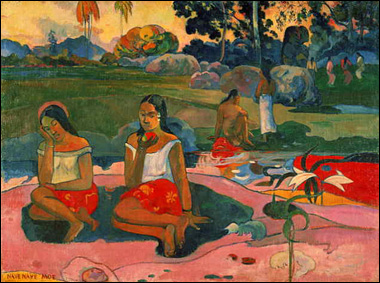
Pink isn’t a primary, secondary, or tertiary color; instead it’s a tint of red, and doesn’t appear on the artist’s color wheel . Some pinks are highly saturated colors, drawing equally from magenta as well as red.
What the color pink means to us psychologically:
Pink is an energetic color with feminine, flirtatious, and even some sexual undertones.
Light, baby pink often projects an effeminate or infant-like innocence, while stronger, hot pinks will have the exact opposite vibe—dominant and powerful, while emphatically feminine.
Those hot pinks tends to grab attention from both from males and females, but like any strong color, too much pink can be overpowering and exhausting.
And if you were wondering, pink’s sexual connotation comes from more than just a cultural trend. The fact is, pink is one of several predominant colors of skin, and humans are psychologically hardwired to respond to it. Orange has some similar effects too.
Is pink a “girl color” or “boy color?”
Pink is most often considered a feminine color. Baby girls are often dressed in pink, and pre-teen and teen girls often choose pink as one of their favorite colors.

It’s not uncommon to see young men (often between the ages of 15 and 35) wearing pink, usually in the form of a pink shirt, with the occasional upturned collar.
This seems to be a cultural expression of innate confidence and/or sensitivity.
Pink in society:
The Pink Panther is a famous cartoon character that first appeared in 1963. Although the Pink Panther’s popularity has waned over the years, it’s still a classic example of how distinctive color can make all the difference.
Pink is also used quite a bit during the month of February and valentines day. Not quite as serious as red, pink is the perfect color for flirtation and infatuation, as shown in millions of pink candy hearts, cards, and other valentine’s day gifts.
In addition, pink has been the symbol for Breast Cancer Awareness as a pink ribbon since the early nineties.
Common pink oil paints:
Unlike many of the other colors I’ve talked about, pink isn’t often produced straight out of the tube. Instead, it’s easy enough to mix any of several popular reds (like Cadmium Red, or Napthol Red) and create your own pink.
This article about organic and inorganic pigments explains which reds will make the most intense pinks.
Famous pink paintings:
As you might expect, there aren’t as many famous pink paintings as other colors, but I did find a painting by Paul Gauguin that used pink. Gauguin painted island scenes later in life, and loved to use bright colors. This painting is entitled Nave, Nave Moe.
This post may contain affiliate links.


